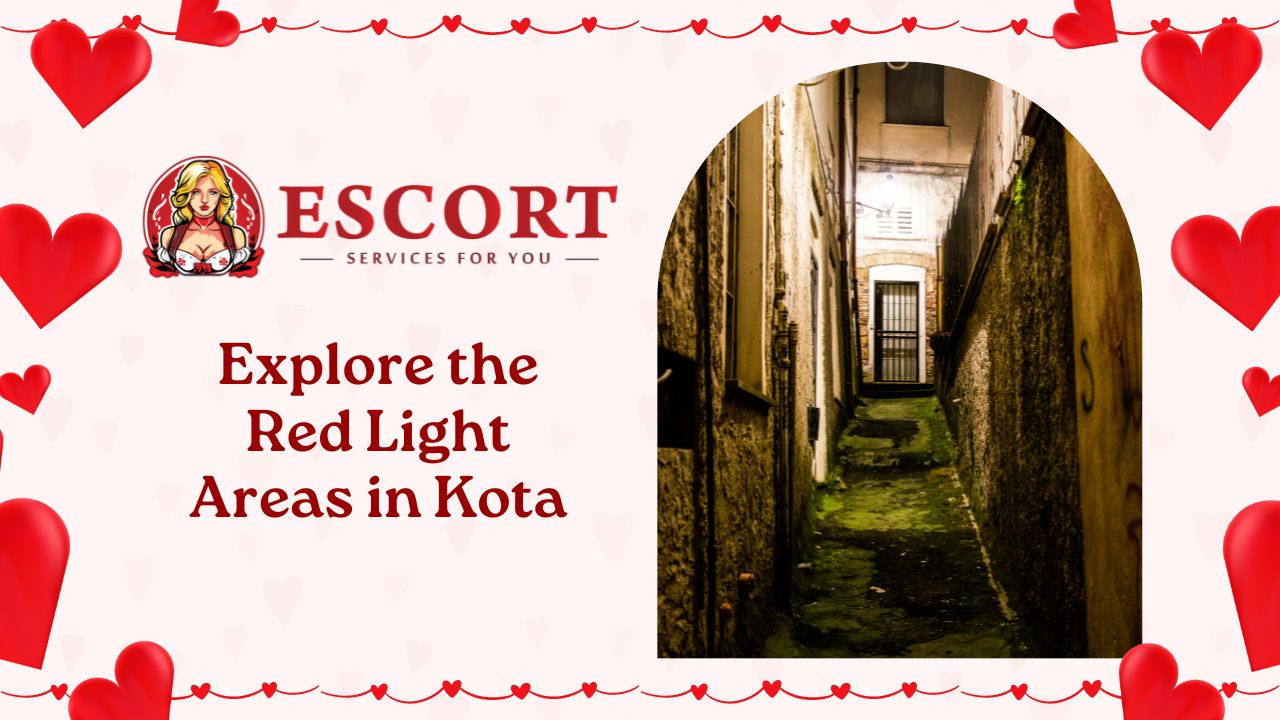Introduction to Red Light Areas in Kota
Welcome to the hidden side of Kota – where the city’s vibrant streets merge with its enigmatic alleys. Today, we delve into a topic that often remains veiled in shadows but plays a significant role in shaping the city’s landscape: Kota’s Red Light Areas. Join us on a journey through history, controversies, safety tips, and glimpses of support initiatives as we uncover the layers of this intriguing facet of Kota. Let’s explore beyond the surface and discover what truly lies within these red-lit districts.
The History of Red Light Areas in Kota
In exploring the history of red light areas in Kota, one delves into a complex tapestry of societal norms and human behavior. These areas have existed for decades, evolving alongside the city itself. Initially established to cater to the needs of travelers and locals alike, these districts took root and became part of Kota’s urban fabric.
The historical context reveals a blend of economic necessity, exploitation, and social stigmas. Over time, these spaces have faced scrutiny from authorities and activists aiming to address issues related to sex work and human trafficking. Despite efforts to regulate or abolish them entirely, red light areas persist as shadowy enclaves within the city.
Understanding their past sheds light on the challenges faced by those working in these sectors. It also prompts reflection on how societal attitudes towards sex work have evolved over time. The history of red light areas in Kota is not just a narrative of vice but also one intertwined with themes of survival, struggle, and resilience.
Current Situation and Controversies Surrounding the Red Light Areas
The current situation surrounding the red light areas in Kota is complex and multifaceted. These areas have been a subject of controversy due to the nature of activities that take place within them. While some argue for their existence as a means of providing livelihoods for sex workers, others raise concerns about exploitation and human trafficking.
Controversies often stem from societal stigma and moral judgments attached to these spaces. The debate continues on how best to address the challenges faced by sex workers while ensuring their safety and well-being. Efforts are being made to regulate these areas, protect vulnerable individuals, and combat illegal activities.
Despite ongoing discussions and disagreements, it remains crucial to approach this issue with empathy and understanding. By acknowledging the complexities involved, we can work towards solutions that prioritize human rights and dignity for all individuals involved in the red light areas of Kota.
Safety Concerns and Precautions for Visitors
As visitors explore the red light areas in Kota, it’s crucial to prioritize safety at all times. Being aware of your surroundings and exercising caution can help ensure a smooth experience. It’s recommended to avoid going alone, especially at night, and always inform someone trustworthy about your whereabouts.
Respecting boundaries is essential when interacting with sex workers in these areas. Remember that they are individuals deserving of respect and understanding. Avoid engaging in any illegal activities or substance abuse during your visit.
Keep valuables secure and refrain from carrying large sums of money to prevent theft or unwanted attention. If you feel uncomfortable or unsafe at any point, trust your instincts and leave the area immediately.
Understanding the risks associated with visiting red light areas is key to staying safe. By being vigilant and proactive in safeguarding yourself, you can navigate these environments responsibly while gaining insights into a complex aspect of society.
What to Expect in the Red Light Areas
As you step into the red light areas of Kota, be prepared for a sensory overload. The streets are bustling with activity, neon lights illuminating the narrow alleys. You’ll encounter a variety of establishments offering different services – from bars and nightclubs to massage parlors and brothels.
The atmosphere can be both intriguing and overwhelming. Expect to see men walking around, looking for companionship, while women wait outside their doors or sit in dimly lit rooms. It’s a stark contrast to the rest of Kota’s vibrant city life.
Navigating through these areas requires caution and respect. Remember that these spaces are where individuals work and live, so always maintain a non-judgmental attitude.
Despite the reputation surrounding red light districts, there is more than meets the eye. Behind the facades lie stories of resilience, survival, and sometimes even camaraderie among workers.
Exploring these areas may challenge your perceptions and evoke mixed emotions. Just remember to approach with an open mind and sensitivity towards those who call it home.
Support and Rehabilitation Programs for Sex Workers
Support and rehabilitation programs for sex workers in Kota play a crucial role in providing them with the necessary resources and assistance to transition out of the red light areas. These programs focus on offering emotional support, skill development training, and access to healthcare services. By empowering these women with education and vocational training, they can pursue alternative livelihoods outside of the sex trade.
Various organizations in Kota are dedicated to helping sex workers reintegrate into society by providing counseling, legal aid, and medical assistance. These initiatives aim to address the root causes that lead individuals into prostitution while promoting their rights and dignity.
Through community outreach efforts and collaboration with local authorities, these programs strive to create a supportive environment where sex workers can seek help without fear of stigma or discrimination. By fostering a sense of empowerment and self-worth, these initiatives contribute to breaking the cycle of exploitation and offering hope for a better future for those involved in the industry.
Alternative Ways to Explore the City of Kota
When visiting Kota, there are plenty of alternative ways to explore the city beyond its red light areas. Take a stroll along the picturesque Chambal Gardens and immerse yourself in nature’s beauty.
For history enthusiasts, a visit to the City Palace Museum is a must to learn about Kota’s rich cultural heritage. Explore the ancient ruins of Garadia Mahadev Temple for stunning views of the Chambal River below.
Experience local life by wandering through vibrant markets like Rangbari and Sarafa Bazar, sampling delicious street food along the way. Don’t miss out on a boat ride at Kishore Sagar Lake or an evening walk at Seven Wonders Park.
Engage in adrenaline-pumping activities like rock climbing at Ghatol Eco Adventure Park or indulge in birdwatching at Menal Bird Sanctuary. Uncover hidden gems in Kota by exploring offbeat paths less traveled by tourists.
Conclusion
Exploring the red light areas in Kota can be an eye-opening experience, shedding light on a complex and often overlooked aspect of society. Understanding the history, current situation, safety concerns, and support programs for sex workers is crucial when venturing into these areas.
It’s important to approach these spaces with respect, empathy, and awareness of the realities faced by those involved. While visiting red light areas may provide insights into a different world, it’s essential to prioritize safety and take necessary precautions.
For those looking to explore Kota beyond its red light districts, there are plenty of alternative ways to immerse oneself in the city’s rich culture and heritage. From visiting historical sites like the City Palace and Jag Mandir to exploring local markets and trying traditional Rajasthani cuisine, there is no shortage of experiences to enjoy in Kota.
Whether delving into the complexities of red light areas or discovering the vibrant essence of Kota through other avenues, approaching each experience with an open mind and sensitivity towards all individuals involved is key. As we navigate through this diverse world we live in, understanding different facets of society helps us foster compassion and empathy towards one another.




